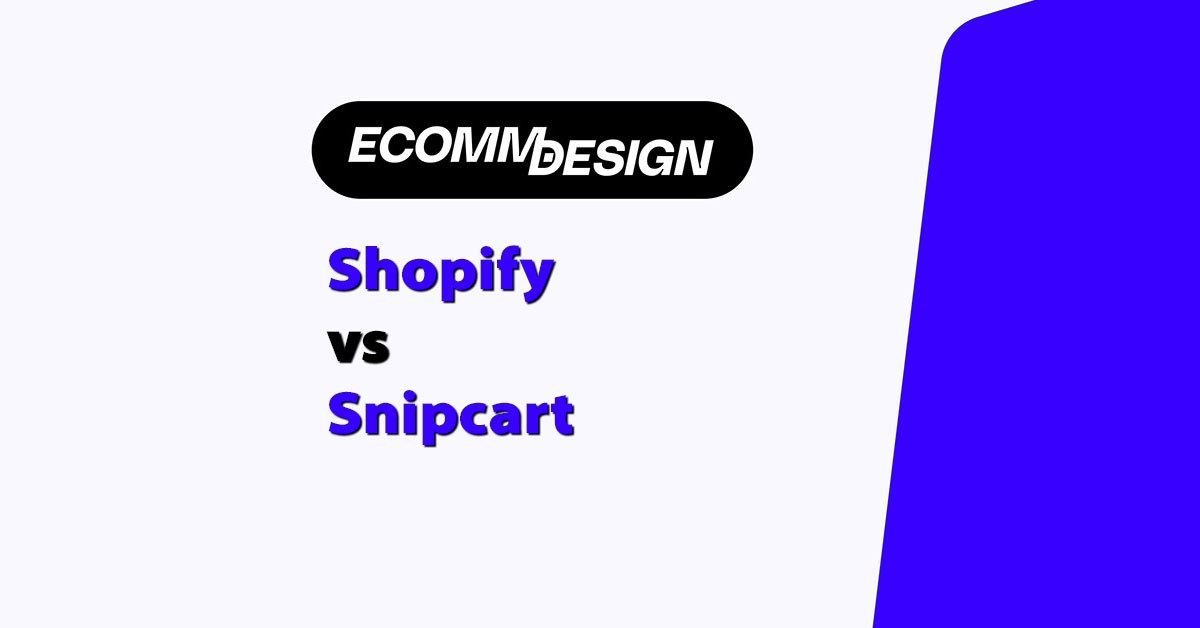
If you’re building a content-first site with full design control and you’re working in a Jamstack environment, Snipcart gives you the flexibility. But it comes with dev overhead.
Shopify, on the other hand, is ideal if you want to launch quickly, manage everything in one place, and don’t want to mess with code. It’s the platform I recommend to most clients who want to grow fast without hiring a developer.
I’ve built stores with both.
Here’s the full breakdown — real pros, real tradeoffs.
What’s the Real Difference Between Shopify and Snipcart?
These two platforms solve the same problem — adding ecommerce to a website — but they do it in totally different ways.
And once you understand how each one approaches the problem, the right choice becomes obvious.
Shopify is a hosted ecommerce builder.
You get everything in one dashboard: the website builder, cart, checkout, payment processing, inventory system, analytics, email marketing tools, and even SEO optimisation features.
It’s designed for entrepreneurs who want to launch and scale without needing to write a single line of code.
Snipcart is completely different.
It’s not a website builder. It’s a cart layer you embed into a site you’ve already built. You handle the design, the CMS, the frontend stack, and the hosting.
Snipcart just handles cart logic and checkout. It’s made for developers who want to keep full control over performance, design, and tech stack — and just need a lightweight ecommerce engine that doesn’t get in the way.
Here’s how I always explain it to clients:
- Shopify is like renting a fully furnished apartment. You can move in today. It looks great, everything works, and you’ve got 24/7 support if anything breaks. You can redecorate a little, but the structure stays the same.
- Snipcart is like building your own custom house. You pick the materials, design every room, and lay every wire. Total freedom — but also total responsibility.
If you’re a content creator, designer, or developer building a static site with something like Next.js, Hugo, or Gatsby, and you want a headless checkout that plays nice with your frontend — Snipcart is a solid pick.
It won’t fight your architecture, and it keeps your stack lightweight.
If you’re not technical or you just want to launch a product line or DTC brand with minimal hassle, Shopify is the tool. Everything’s built in, and it’s built to scale.
Here’s a simple breakdown of how they differ:
| Area | Shopify | Snipcart |
|---|---|---|
| Approach | All-in-one platform | Headless cart overlay |
| Tech Stack | Shopify’s proprietary platform | Your own frontend + Snipcart script |
| Hosting | Fully hosted by Shopify | You provide hosting (e.g. Netlify, Vercel) |
| CMS | Built-in | Bring your own (e.g. Sanity, Storyblok) |
| Frontend Control | Limited to themes or Liquid | Total control with React, Vue, Hugo, etc. |
| Checkout | Shopify Checkout (customisable in Plus) | Customisable Snipcart overlay |
| Ideal For | Founders, small teams, ecommerce ops | Developers, agencies, headless builds |
Some dev teams even combine the two — they build a Jamstack frontend and use Shopify as a headless backend (with Hydrogen or Storefront API).
But if you’re deciding strictly between Shopify vs Snipcart, it boils down to how much control you want — and how much dev time you’re prepared to commit.
Verdict:
Shopify wins for 95% of users. It’s faster to launch, easier to manage, and better supported.
Snipcart shines when you’re building something custom, where ecommerce is just one part of a broader, high-performance web experience.
Ease of Use: Shopify Is Way Faster to Launch
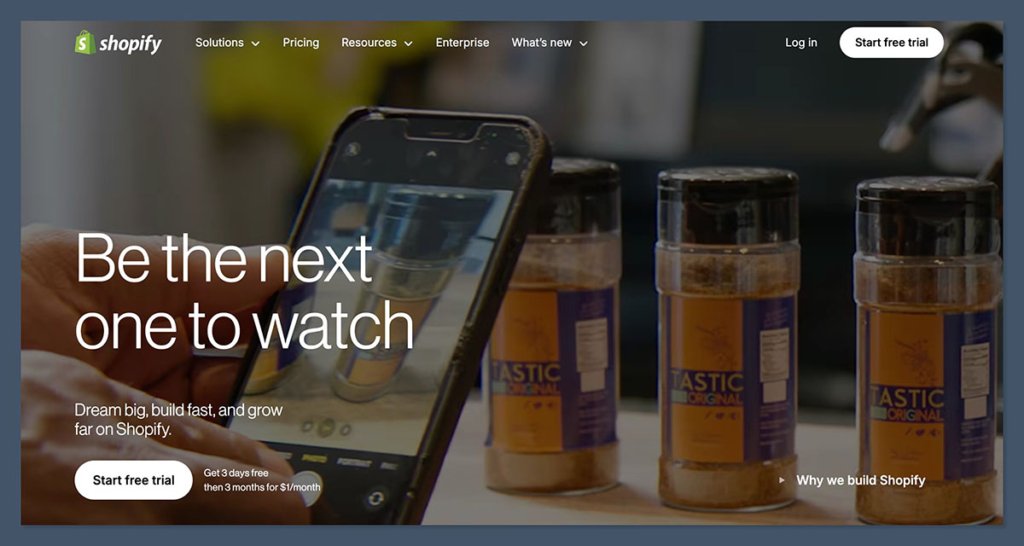
This is where Shopify really pulls ahead — not just by a little, but by a mile.
If you’re looking to launch fast, manage everything in one place, and avoid technical roadblocks, Shopify is built for exactly that.
Shopify’s Setup Experience
When I set up a store on Shopify, I was live in under 30 minutes.
That included adding a product, choosing a theme, connecting a payment provider, and setting up shipping zones.
I didn’t need a developer, I didn’t need GitHub, and I didn’t touch a line of code unless I wanted to. Everything is handled through a single admin dashboard.
The platform walks you through every step:
- Store name and niche
- Product setup (digital, physical, subscriptions)
- Domain connection
- Payment setup (Stripe, PayPal, Shopify Payments)
- Theme and homepage setup
- Tax and shipping automation
You also get a setup checklist, a clean UI, and integrated help docs throughout the backend. It’s a smooth, non-technical workflow. Anyone can figure it out.
Snipcart’s Setup Experience
Setting up Snipcart, on the other hand, is a technical process from the start.
You’re not starting from a dashboard — you’re starting from a blank repo or your own static site. You’ll need to manually:
- Choose and set up a static site generator (Gatsby, Hugo, Nuxt, etc.)
- Host your site on a platform like Netlify or Vercel
- Add Snipcart’s JavaScript SDK to your frontend
- Build product cards with the right
data-item-*attributes - Configure payment gateways (Stripe or PayPal)
- Build your own CMS integration if you want editable product content
- Handle inventory, shipping rules, taxes — all manually or via API
There’s no drag-and-drop builder, no setup wizard, and no onboarding flow.
If you’re not comfortable writing and deploying code, it’s going to be a rough ride. If you are — and you want a clean headless setup — then it’s a dream.
Here’s what you’ll need for a basic Snipcart integration:
- A deployed frontend (e.g. on Netlify or Vercel)
- A headless CMS (like Sanity, Contentful, or markdown)
- Product pages with structured
data-item-*attributes - Stripe or PayPal account connected via dashboard
- Knowledge of HTML, CSS, and JavaScript
It’s not impossible, but it’s definitely not for beginners.
Setup Comparison Table
| Feature | Shopify | Snipcart |
|---|---|---|
| Hosting Included | Yes (fully hosted) | No (you manage hosting) |
| Onboarding Time | 20–30 minutes | Several hours to days (depending on stack) |
| Dashboard Available | Yes | Limited (after integration) |
| Requires Dev Experience | No | Yes |
| Visual Editor | Yes (theme customiser) | No |
| Product Management UI | Yes | No (manual via code or CMS) |
Verdict: Shopify Wins for Speed and Simplicity
If you’re solo, working on a deadline, or building your first ecommerce site — go with Shopify.
You’ll be live within a day, and you’ll be able to manage everything from one clean interface. No terminal, no APIs, no stress.
Snipcart has its place. It’s powerful for developers building custom sites, and it integrates beautifully into a Jamstack workflow.
But it’s built for a dev-first audience. Without a developer on hand, you’re going to spend more time building infrastructure than selling products.
For most people — especially non-technical founders — Shopify is the clear winner here.
Features: One Is All-In-One, One Is Modular
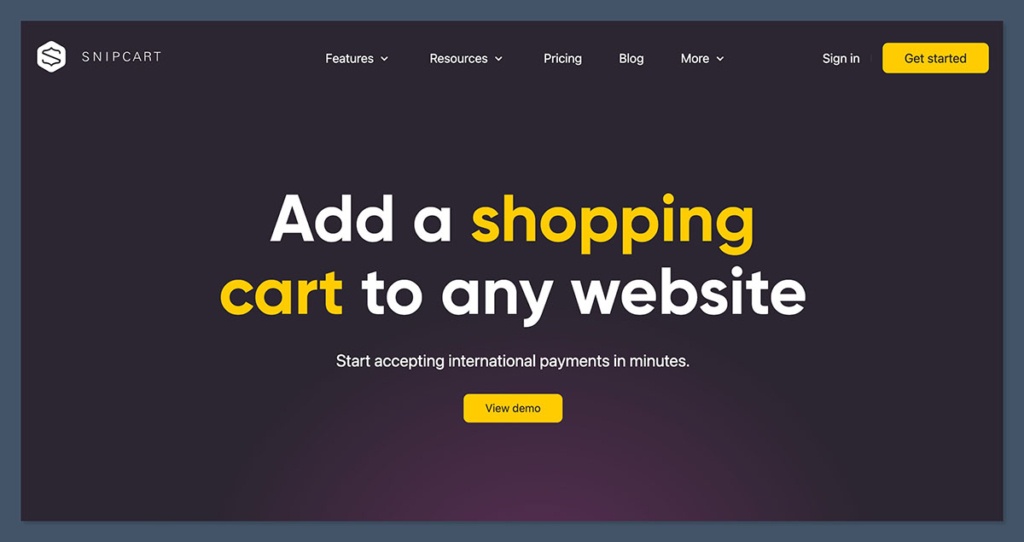
This is where the real separation happens — Shopify is a fully integrated ecommerce platform, while Snipcart is a modular cart layer that you have to connect to everything else.
You’re either getting everything in one box, or you’re assembling the box from scratch.
What You Get Out of the Box with Shopify
When I log into a new Shopify store, everything I need to run a business is right there. No third-party tools required just to get going.
That’s the key appeal of Shopify — it removes decision fatigue and technical setup from the equation.
Here’s what Shopify includes by default:
- Product catalogue management with variants, inventory tracking, and collections
- Order management dashboard to process, fulfil, and refund orders
- Built-in CMS for creating blog content and pages
- Shopify Payments (Stripe-powered) with reduced transaction fees
- Abandoned cart recovery built in
- SEO tools — custom meta, schema, sitemap
- Multichannel selling — Amazon, Facebook, Instagram, TikTok
- App Store with over 8,000 third-party apps
- Shipping, tax, and discount tools for international commerce
- Mobile app for managing orders on the go
It’s a business-in-a-box — you can launch, optimise, and scale without needing to touch any external services unless you want to.
What You Get with Snipcart (and What You Don’t)
Snipcart is more surgical. It’s not trying to be a platform.
It does one job: turn a static or headless site into a functioning ecommerce experience by adding cart and checkout functionality.
Here’s what Snipcart gives you:
- Secure checkout overlay that can be styled and customised
- Shopping cart UI with real-time item updates
- Custom fields for forms, product options, and user input
- Recurring billing/subscriptions
- Webhooks and order APIs for integration with other services
- Shipping + tax calculators
- Dashboard for basic order management and analytics
- Email notifications for orders and shipping events
But here’s what Snipcart doesn’t include, by design:
- No product catalogue UI
- No built-in CMS
- No theme system or page builder
- No inventory tracking (unless you build it)
- No marketing or email tools
- No mobile app for managing orders
- No marketplace or native multichannel integrations
To get the rest of the ecommerce stack, you’ll need to integrate with third-party tools:
- CMS → Sanity, Contentful, Storyblok
- Payments → Stripe or PayPal
- Search → Algolia, Typesense
- Shipping → Shippo, EasyPost
- Email → SendGrid, Mailchimp, Postmark
- Automation → Zapier, n8n, Make
You can connect all these — but you’re writing code or handling APIs.
Feature Breakdown Table
| Feature Category | Shopify (All-in-One) | Snipcart (Cart-Only) |
|---|---|---|
| Product Management | Yes (with variants, inventory, SKUs) | No (handled via frontend/ CMS) |
| Checkout & Cart | Yes (Shopify Checkout) | Yes (Customisable overlay) |
| CMS | Built-in (blog + pages) | No (requires third-party CMS) |
| Payment Gateway | Shopify Payments + 100+ integrations | Stripe, PayPal only |
| Multichannel Selling | Yes (Amazon, Meta, TikTok, etc.) | No |
| Email Marketing | Built-in + apps (Klaviyo, Mailchimp) | No (manual integrations only) |
| Shipping Tools | Built-in rate calculators and labels | Yes, basic calculators only |
| SEO Tools | Built-in SEO editor and tools | Depends on your frontend stack |
| Mobile App | Yes | No |
| App Ecosystem | 8,000+ apps | None – integrations are code/API-based |
Verdict: Shopify Gives You the Whole Machine
Shopify is the full ecommerce machine — ready to go.
You can build your product catalogue, process payments, run ads, automate fulfilment, and send email flows — all from one dashboard. That’s what makes it unbeatable for most users.
Snipcart is lean and elegant, but it’s just one cog in the wheel.
It’s designed for developers who are already building a site and just need a cart — nothing more, nothing less. That’s a solid use case, but it’s niche.
If you want plug-and-play ecommerce, Shopify wins.
If you want to build every part of the experience yourself, Snipcart gives you that freedom — with more moving parts.
Design and Customisation: Snipcart Wins for Devs
This is where Shopify and Snipcart couldn’t be further apart — one gives you guardrails, the other gives you total freedom (and all the responsibility that comes with it).
Shopify’s Approach to Design
Shopify uses a theme-based system. You choose from a library of free and paid themes (190+ total, 13 free), and then customise it using the theme editor.
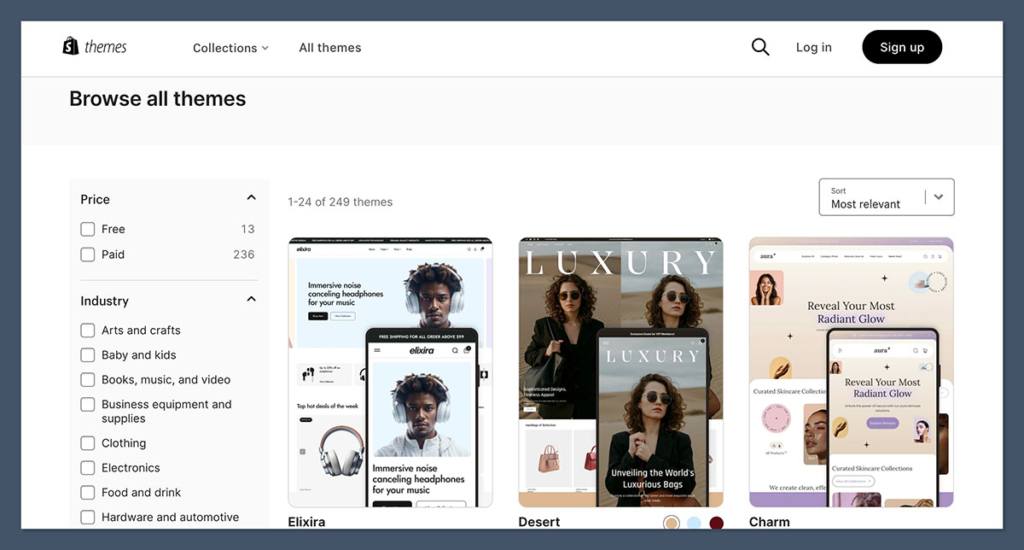
The interface is visual, clean, and built for non-coders — you can update fonts, colours, section layouts, homepage blocks, and product page settings without touching code.
But here’s the limitation: if you want full design freedom, you’ll eventually hit a ceiling.
Shopify uses Liquid, its own templating language. It’s powerful, but not intuitive for beginners.
If you want to create totally custom layouts or components, you’re either editing theme files directly or hiring a developer.
You also don’t control Shopify’s HTML output or backend structure. Even with the new Online Store 2.0 framework, you’re still operating within a predefined setup.
What’s good about Shopify design:
- Easy-to-use visual editor
- Polished, mobile-optimised themes
- Drag-and-drop sections (with Store 2.0)
- App blocks for third-party tools
- Basic customisation is fast and intuitive
What’s limiting:
- No true frontend control without dev help
- Layout structure is locked unless edited in Liquid
- Checkout design is fixed (unless you’re on Shopify Plus)
Snipcart’s Approach to Design
Snipcart flips the model. It’s not a page builder. It’s just the cart and checkout layer. You build the frontend however you want — Snipcart doesn’t care.
Want to use React with styled components? Go for it. Want a site in Hugo with Tailwind CSS? Perfectly fine. You build the site; Snipcart just hooks into it.
This is a dream setup for developers or designers who want zero layout restrictions and full control over UX and site speed.
You decide exactly how the storefront looks, where products show up, how they’re structured, and what the cart interaction feels like.
Snipcart doesn’t have a theme system, and it never will — that’s the point. You bring the frontend stack.
Snipcart works with:
- React
- Vue
- Astro
- Svelte
- Hugo
- Eleventy
- Plain HTML/CSS/JS
Snipcart injects a cart and checkout overlay via a JavaScript SDK. You style it, extend it, and connect it to your stack however you like.
What’s good about Snipcart design:
- Full freedom to control every pixel
- Works with any frontend stack
- Great for performance and minimalism
- Ideal for headless builds and custom UX
What’s limiting:
- No visual builder
- No pre-made themes
- You handle everything — no guardrails
Design Comparison Table
| Feature | Shopify | Snipcart |
|---|---|---|
| Theme System | Yes (13 free, 190+ total) | No themes |
| Visual Editor | Yes (drag-and-drop section editor) | No visual interface |
| Frontend Control | Limited (within theme constraints) | Full control (any framework or stack) |
| Custom Code Required? | Sometimes (for deeper edits) | Yes (always, it’s a dev environment) |
| Checkout Customisation | Limited unless on Shopify Plus | Fully customisable with CSS/JS |
| Mobile Responsiveness | Included in themes | Depends on your frontend build |
| Built for Non-Developers? | Yes | No |
Verdict: Snipcart Wins for Devs, Shopify Wins for Everyone Else
If you’re a developer — or working with one — Snipcart gives you unmatched control over the entire user experience.
You can create a storefront that’s lightning fast, fully bespoke, and perfectly matched to your brand.
It’s the obvious choice if you’re running a headless build or Jamstack project and want ecommerce as a layer, not a platform.
But if you’re a founder, designer, or non-technical marketer who just wants to build and sell — Shopify wins.
The visual tools, themes, and app integrations get you to market faster without technical hurdles. You won’t have full freedom, but you’ll have enough to launch something beautiful — fast.
For design customisation:
- Snipcart wins if you want total frontend control.
- Shopify wins if you want a fast, polished visual editor with minimal setup.
Pricing: Depends on Your Revenue and Stack
Pricing is where Shopify and Snipcart take very different paths — and the right choice really comes down to two things: how much you’re selling and how comfortable you are managing your own tech stack.
Shopify uses a subscription-based model with fixed monthly fees and transaction charges.
Snipcart flips that around — there’s no monthly fee, but you’ll pay a percentage of each transaction.
If you’re bootstrapping a store and trying to stay lean, that difference can matter — especially early on.
Shopify Pricing Overview
Shopify gives you three core plans:
- Basic: $29/month + 2.9% + 30¢ per transaction
- Shopify: $79/month + 2.6% + 30¢
- Advanced: $299/month + 2.4% + 30¢
They also offer a 3-month intro promo at $1/month, which is great for launching without pressure.
These prices include:
- Hosting
- Built-in CMS
- SSL certificates
- Support
- Access to free themes and app store
But you’ll want to keep an eye on app costs — a lot of Shopify’s best functionality (reviews, upsells, email marketing) comes from paid apps. These can add $20–$200+ per month depending on your stack.
If you’re running a growing store, Shopify’s flat fee model is predictable — but for very small stores or side projects, it might feel heavy.
Snipcart Pricing Overview
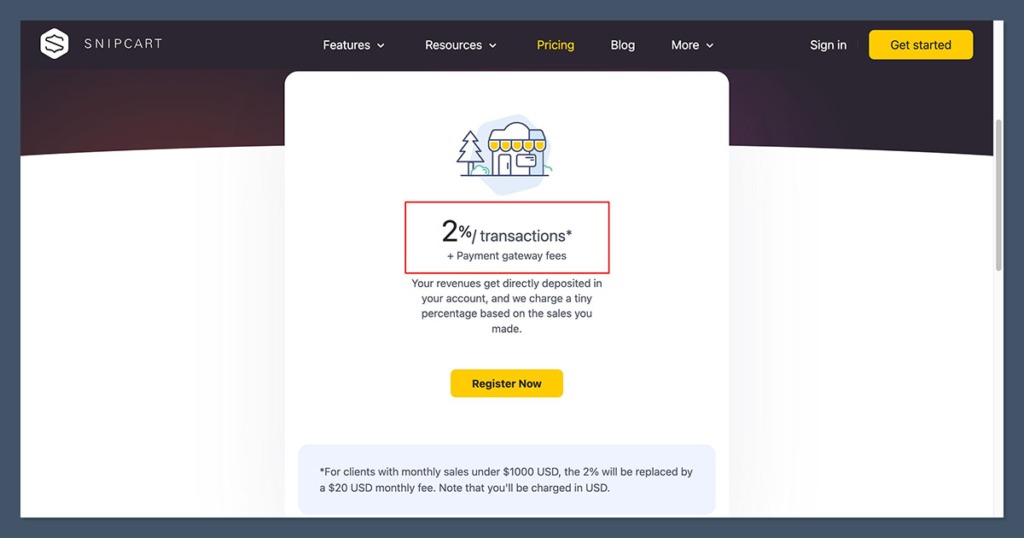
Snipcart has no monthly fee — you pay 2% per transaction on top of Stripe or PayPal’s processing fees.
There’s no tiered pricing, no “plan upgrades,” and no hard caps — just a flat usage-based model.
That makes it ideal for:
- Side projects or small digital product stores
- Developer-driven builds where most tools are free/open-source
- Sellers who don’t want upfront platform costs
But once you start making real volume, that 2% starts to bite. It’s great when you’re making $1K–2K/month. At $10K/month or more, it can add up quickly.
Real-World Pricing Example
From one of my side projects — a small digital product site:
| Monthly Revenue | Shopify Basic | Snipcart |
|---|---|---|
| $1,000 | $29 + $29 (2.9%) = $58 | $20 (2%) = $20 |
| $10,000 | $29 + $290 = $319 | $200 = $200 |
| $50,000 | $29 + $1,450 = $1,479 | $1,000 = $1,000 |
Snipcart starts out cheaper, but as revenue climbs, Shopify becomes more cost-efficient, especially once you factor in the added features you get.
Also worth noting — Shopify Payments reduces your fees if used directly. On the higher plans, your processing rate goes down to 2.6% or even 2.4%.
Other Considerations
| Feature | Shopify | Snipcart |
|---|---|---|
| Monthly Fee | $29–$299 | $0 |
| Transaction Fee | 2.4%–2.9% + 30¢ | 2% flat (plus Stripe/PayPal) |
| Hosting Included | Yes | No |
| Support Included | Yes | No (email only) |
| Apps and Add-ons | Extra cost | Must build or integrate |
| Best Value for… | High-volume stores | Low-volume / dev-heavy sites |
Verdict: Snipcart Wins for Small Dev Projects, Shopify Wins at Scale
If you’re just starting out and don’t want to commit to a platform fee, Snipcart keeps your costs low — as long as you can build and maintain the rest of the stack.
But once your store grows, Shopify’s predictable pricing and built-in features make it a better long-term play.
Especially when you add in time saved on managing tech, integrations, and support.
So, the question is:
- Are you building a lean, developer-powered site? Go with Snipcart.
- Are you planning to scale and optimise fast? Shopify pays off over time.
SEO and Performance: Snipcart + Jamstack Is Faster
If your ecommerce site lives or dies by organic traffic, SEO and performance aren’t just checkboxes — they’re business-critical.
Both Shopify and Snipcart can rank well in Google, but the way they get there is very different.
Shopify handles SEO for you, but limits some of what you can touch. Snipcart puts everything in your hands — for better or worse.
Shopify’s SEO Features: Strong, but Structured
Shopify has solid SEO capabilities baked into the platform. You get:
- Clean URLs for products, collections, and pages
- Customisable meta titles and descriptions
- Automatic sitemap.xml and robots.txt
- Image alt text support
- Canonical tags to avoid duplicate content
- Built-in structured data for rich snippets
- Semrush integration through the Ecommerce Booster app (for keyword research and on-site optimisation)
It’s more than enough for most ecommerce stores. Shopify covers the fundamentals, and with the right theme and app setup, you can rank well.
But there are tradeoffs:
- You can’t change the URL structure — for example, product pages always live under
/products/, and collections under/collections/ - You’re dependent on how well your theme is built — some themes load slowly or use too much JavaScript
- Your site is hosted on Shopify’s infrastructure — which is good, but not Jamstack-level fast
- Page performance can suffer if you overload on third-party apps or poorly optimised themes
Shopify works — but it doesn’t give you full control.
Snipcart’s SEO Capabilities: Full Control with Jamstack
Snipcart doesn’t manage your SEO. Why? Because it doesn’t manage your site — you do.
This is where Snipcart, paired with a Jamstack setup, starts to shine.
You choose the frontend, the CMS, the framework, and the hosting provider — so you can optimise everything exactly the way you want.
If you’re building with Next.js, Astro, Hugo, or Eleventy, and hosting on Vercel or Netlify, you’ll get:
- Ultra-fast page loads thanks to static site generation
- Customisable URL structure — no platform restrictions
- Full meta control (titles, descriptions, Open Graph, Twitter cards)
- Complete control over structured data — add whatever schema you want
- Excellent Core Web Vitals out of the box
- Cleaner, lighter pages — no bloated third-party app scripts
There’s a reason most Lighthouse-perfect ecommerce builds are Jamstack-based — and Snipcart slots right into that world.
But it’s not magic. You have to know what you’re doing, or work with someone who does.
There’s no dashboard for SEO — you’re setting this up manually through your stack.
SEO & Performance Comparison Table
| Feature | Shopify | Snipcart + Jamstack |
|---|---|---|
| Meta Control | Yes (via dashboard) | Full (code-based) |
| URL Customisation | Limited (fixed structure) | Full (define your own routes) |
| Structured Data | Basic (built into themes) | Custom (you define schema) |
| Site Speed | Good (depends on theme/apps) | Excellent (static, CDN-first) |
| Core Web Vitals | Varies (depends on theme & apps) | Top scores with static build |
| Image Optimisation | Handled by Shopify | Depends on your stack |
| Sitemap & Robots.txt | Auto-generated | Fully customisable |
| Best For | Founders needing built-in SEO tools | Devs optimising for speed and ranking |
Verdict: Snipcart Wins for Devs Who Prioritise SEO & Speed
If you’re building a custom storefront and care deeply about performance, Jamstack with Snipcart will give you the best possible technical SEO foundation.
You get full control, better Core Web Vitals, and cleaner code — all of which help with search rankings and UX.
But if you’re not technical or don’t want to build the SEO stack yourself, Shopify is more than capable.
It gets you 80–90% of the way there, without touching code, and works for the vast majority of ecommerce brands.
- Use Snipcart if SEO and speed are your edge, and you’ve got the dev resources to optimise for both.
- Use Shopify if you want SEO handled in a visual interface, and speed that’s “good enough” out of the box.
Integrations + App Ecosystem: Shopify Wins for Plug-and-Play
When it comes to integrations, the difference between Shopify and Snipcart is like walking into a fully stocked kitchen versus shopping for every appliance yourself.
One gives you everything with a click.
The other gives you the freedom to pick and wire it all together — if you’re up for the extra work.
Shopify’s App Ecosystem: Massive and Seamless
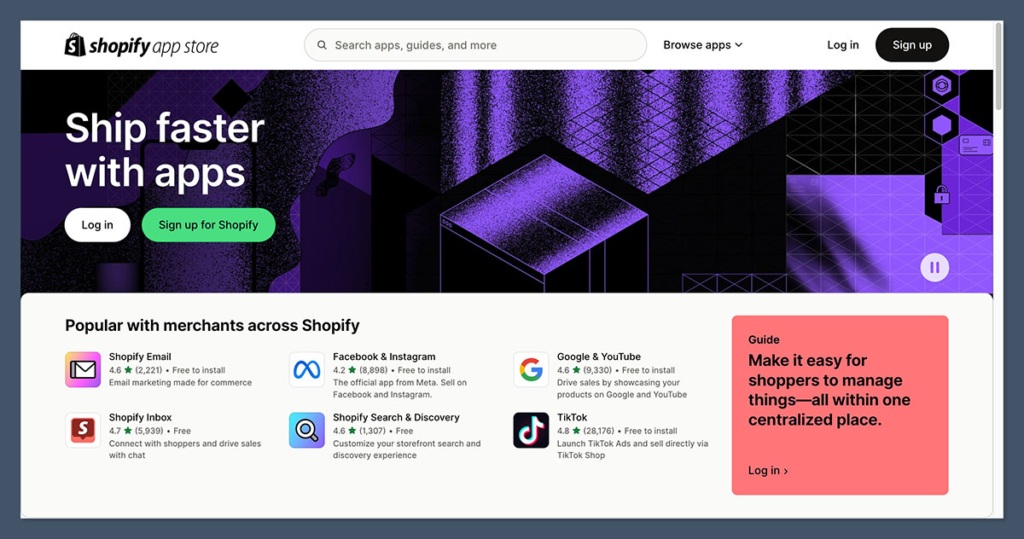
Shopify’s app store is one of its strongest assets — with over 8,000 apps covering everything from email marketing to loyalty programs, shipping software, inventory syncing, AI-powered copy, fraud detection, and upsell tools.
You don’t need to know how to code.
Just pick an app, install it, configure your settings, and it’s live on your store. You’ll find both free and paid options, with apps built by Shopify, top SaaS companies, and third-party devs.
Popular Shopify Apps Include:
- Klaviyo – Email and SMS marketing
- Loox – Photo reviews and user-generated content
- Yotpo – Reviews, loyalty, and referrals
- ReConvert – Post-purchase upsells
- Oberlo – Dropshipping product import (now sunset, but historically a key player)
- Judge.me, ShipStation, Printful, Recharge — All plug-and-play
Shopify apps integrate directly into your dashboard, and most add functionality visually. No APIs, no code, no Zapier loops — just click, configure, and go.
That convenience is a big deal when you’re short on time, technical resources, or just want to focus on growth instead of glueing together software.
Snipcart’s Integration Model: Total Freedom, More Work
Snipcart doesn’t have an app store — and that’s by design. It assumes you’re building your own stack.
You connect tools yourself, usually through APIs, SDKs, or automation platforms like Zapier, Make, or n8n. It gives you more flexibility — but you (or your dev team) are doing the plumbing.
Here’s the kind of stack I’ve used with Snipcart projects:
Typical Snipcart Stack:
- CMS → Sanity, Storyblok, Netlify CMS, or markdown content
- Payments → Stripe or PayPal (direct integrations)
- Search → Algolia or Typesense
- Shipping → Shippo or ShipStation (via API or webhook)
- Email → Postmark, SendGrid, or Mailchimp (via Zapier or serverless functions)
- Analytics → GA4, Plausible, or Fathom
- Automation → Zapier, Make, or custom backend functions
This is powerful if you want to use best-in-class tools at every layer. You’re not locked into one ecosystem. But you’re stitching it all together — which adds complexity.
Even simple automations (like sending a receipt email with a digital download link) require webhook handling or third-party tools.
Integration Ecosystem Comparison Table
| Feature Category | Shopify | Snipcart |
|---|---|---|
| App Store | Yes (8,000+ apps) | No |
| Ease of Integration | One-click installs, visual setup | Manual API connections, Zapier/webhooks |
| CMS Options | Built-in + Headless CMS via apps | External CMS only (e.g. Sanity) |
| Search Tools | Native + App store options (e.g. Doofinder) | External tools like Algolia |
| Shipping Tools | Built-in or via apps (ShipStation, Easyship) | External tools via API or Zapier |
| Email & SMS | Klaviyo, Mailchimp, SMSBump (via app) | SendGrid, Mailchimp (via Zapier/API) |
| Automation & Logic | Built-in flows or app-based automation | Serverless functions, Make, Zapier |
| Developer Required? | Rarely | Always (for integration) |
| Ideal For | Founders and marketers | Developers and technical teams |
Verdict: Shopify Wins for Convenience, Snipcart Wins for Custom Builds
If you want speed and simplicity, Shopify gives you every tool you’ll need right out of the box.
Everything’s designed to work together — and when it doesn’t, there’s almost always an app that does the job.
But if you’re building a custom system, Snipcart offers unmatched flexibility.
You choose your CMS, your logic, your stack — nothing is dictated by a platform. It’s a blank slate, which is perfect for agencies or dev teams that want control over every piece.
So here’s the trade-off:
- Shopify is for teams that want to launch and grow without touching APIs.
- Snipcart is for teams that treat ecommerce like code — fully modular, deeply integrated, and tailor-made.
Best Use Cases: Who Should Use What?
Let’s be real — Shopify and Snipcart aren’t trying to do the same thing. They solve very different problems for very different users.
That’s why I don’t think of them as direct competitors.
You’re not choosing between two similar platforms — you’re choosing between a full-suite ecommerce engine and a developer-focused checkout layer.
Your decision should come down to:
- What kind of team you have
- How quickly you need to launch
- How important custom design and performance are
- Whether ecommerce is your core product — or just a feature on your site
When Shopify Makes the Most Sense
Shopify is ideal for founders who want to focus on growth, not infrastructure. You don’t need to think about hosting, CMS, payment gateways, or shipping tools — it’s all built in.
Use Shopify if you are:
- A startup without a developer, or with limited tech resources
- A DTC brand building a strong visual identity with scalable operations
- Selling physical or subscription-based products
- Running influencer, affiliate, or TikTok campaigns
- Building a store where ecommerce is the core experience
- Planning to sell on Amazon, Meta, Pinterest, TikTok, eBay, or in-person
It’s also great if you want:
- Built-in inventory and fulfilment
- Visual control over your site without touching code
- Access to thousands of plug-and-play apps
When Snipcart Makes the Most Sense
Snipcart is built for developers, agencies, and technical founders who are already using static site generators or headless CMSs.
It works best when you already have a site — or you’re building one from scratch — and want to bolt on ecommerce with full control over the frontend.
Use Snipcart if you are:
- A developer or designer who wants to fully own UX and performance
- Running a static site, Jamstack build, or headless CMS
- Selling digital products, courses, memberships, or custom product types
- Building a site where ecommerce is just one part of the content mix
- Prioritising speed, Core Web Vitals, or technical SEO
- Happy managing payments, inventory, and integrations manually
Snipcart shines in setups where:
- The main value is content (blog, resources, tools)
- The site isn’t built with ecommerce-first platforms like Shopify or Wix
- You want to avoid platform lock-in
Use Case Comparison Table
| Use Case | Best Platform | Why |
|---|---|---|
| Launching a store without devs | Shopify | All-in-one platform, easy setup |
| Building a high-performance Jamstack site | Snipcart | Total frontend control, fast static build |
| Selling on Amazon, TikTok, Meta | Shopify | Seamless multi-channel integrations |
| Running a recipe site with a few ebooks | Snipcart | Lightweight cart layer on content-first site |
| Scaling a 500-SKU DTC brand | Shopify | Robust backend, fulfilment, and inventory tools |
| Creating a custom React or Vue frontend | Snipcart | No theme restrictions, full stack flexibility |
| Building digital product MVPs | Snipcart | Low overhead, pay-as-you-go pricing |
| Operating a dropshipping business | Shopify | App ecosystem, fulfilment integrations |
Real Projects I’ve Worked On
Shopify Build:
A DTC skincare brand with over 500 SKUs needed to launch quickly for a Black Friday campaign.
We used Shopify’s native tools to manage product variants, inventory sync, TikTok integration, and influencer gifting campaigns.
From setup to live, we launched in 2 weeks — zero backend code required.
Snipcart Build:
A content-heavy recipe blog selling PDF bundles, digital meal plans, and video tutorials.
We used Hugo for the frontend, hosted on Netlify, and integrated Snipcart for the checkout flow.
The average order value was $8, and revenue hit $3,000/month in under 90 days — no Shopify subscription, no bloated apps.
Verdict: Different Tools for Different Jobs
You wouldn’t use a sledgehammer to hang a picture. And you wouldn’t use a screwdriver to demo a wall. The same logic applies here.
- Shopify is for speed, scale, and simplicity. Perfect if ecommerce is your core business.
- Snipcart is for full customisation. Ideal when ecommerce is just one piece of a broader content or dev-driven experience.
Final Thoughts
I’ve worked with both. I respect both. And I’ve recommended both — depending on the project.
If you want to go live this week, and you want to focus on marketing and fulfilment — go with Shopify.
If you’ve got a dev team (or you’re the dev), and you want to build a beautiful, high-performance frontend with ecommerce layered in — Snipcart gives you that freedom.
They’re not fighting for the same customers. They’re solving different problems.
Pick the one that fits your team, your timeline, and your tech stack.






